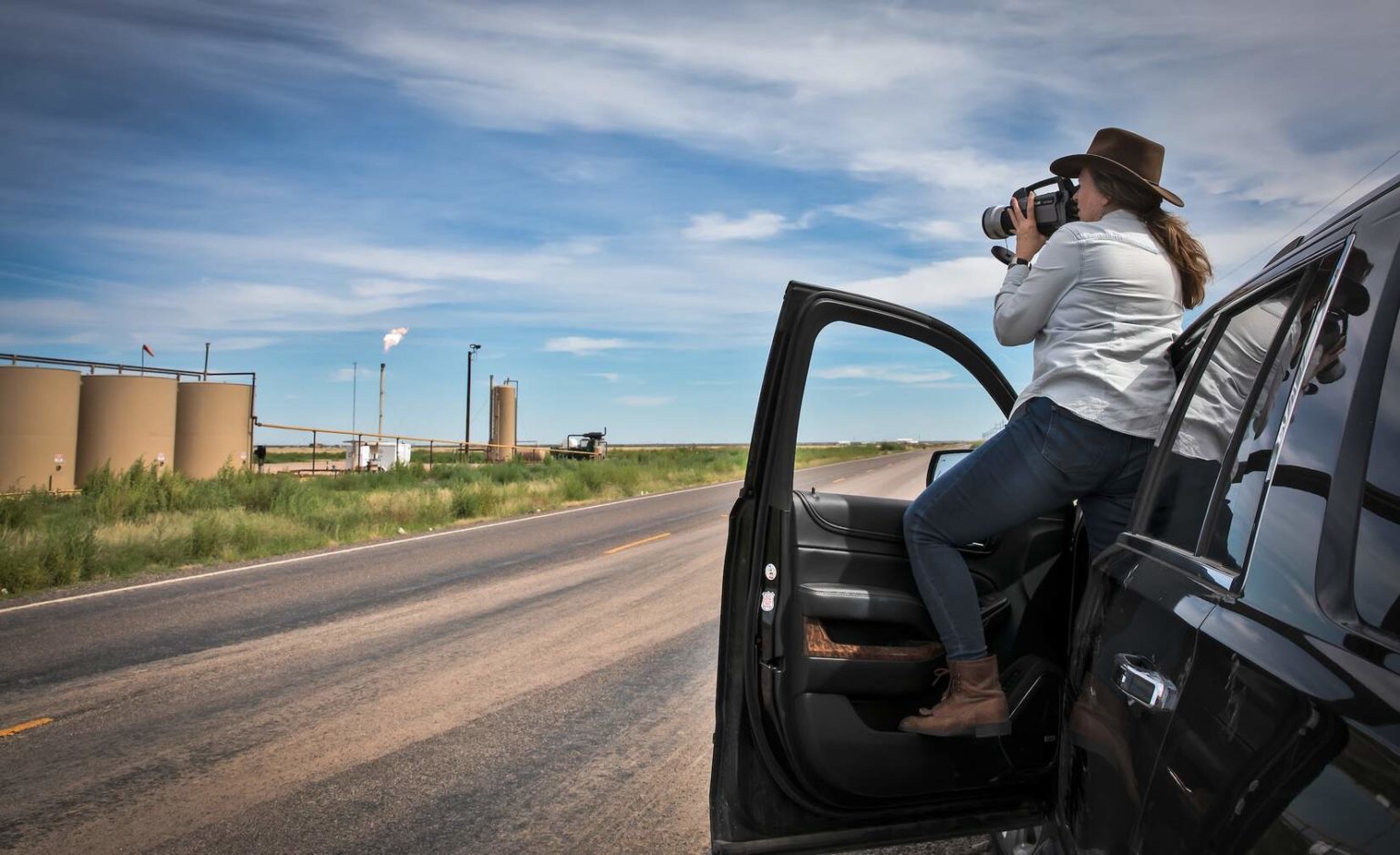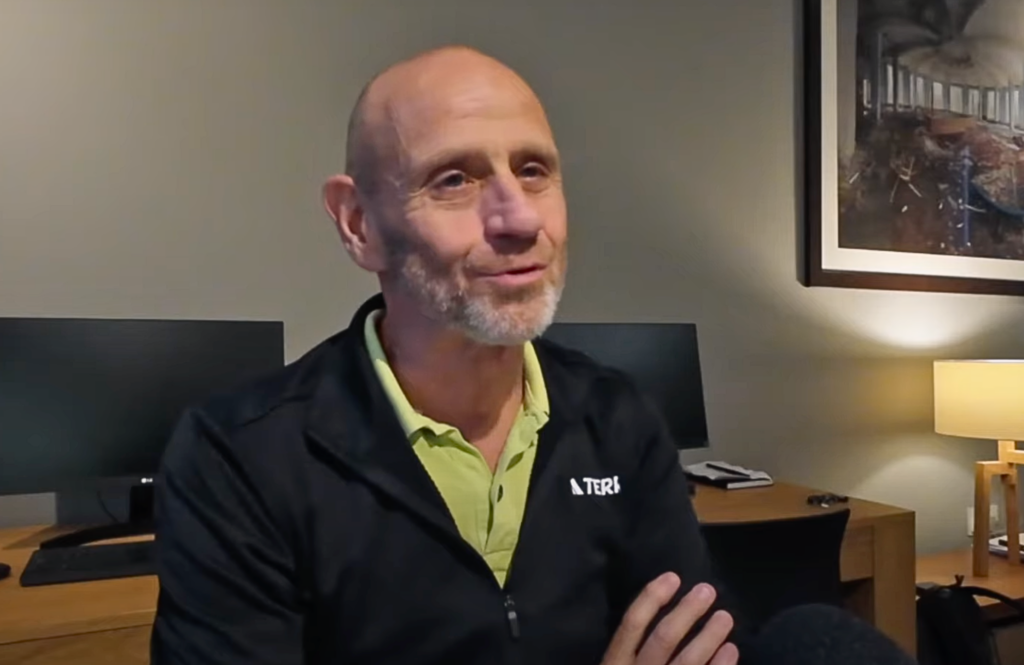Over the past five years, environmental advocates with the nonprofit Earthworks have made trips to 298 oil and gas wells, compressor stations, and processing plants across the Permian Basin in Texas, an oil patch which last year hit record-high methane pollution levels for the U.S. During those trips, Earthworks found and documented emissions from the oil industry’s equipment, and on 141 separate occasions, they reported what they found to the state’s environmental regulators.
However, in response to those 141 complaints, the Texas Commission on Environmental Quality (TCEQ) took action to reduce pollution — by, for example, issuing a violation to the company responsible — just 17 times, according to a new report published today by Earthworks, which describes a pattern in which Texas regulators failed to address oilfield pollution problems, allowing leaks to continue in some cases for months.
TCEQ took “other” regulatory action, which the report said might be contacting the company operating the site or sending out an inspector, in response to 60 complaints, but in many cases Earthworks said TCEQ‘s response came weeks or months after the report was filed.
In 22 cases, TCEQ closed the complaint but took no action at all, the report says. And 42 of the nonprofit’s pollution complaints remain open.
“It’s not surprising to Texans that state law favors the oil and gas industry,” said Sharon Wilson, an Earthworks thermographer and Texas coordinator who filed the complaints described by the report. “What should be a surprise is that Texas regulators charged with protecting the public often can’t be bothered to enforce what laws do exist.”
There’s no question that the Permian Basin has a massive problem with methane. In April, researchers from Harvard University and the Environmental Defense Fund reported finding the largest methane plume ever reported in the U.S. over the Permian oilfields in 2018 and 2019, linking the globe-heating pollution to “extensive venting and flaring” from oilfield equipment.
“This is a really big deal from a climate standpoint,” the researchers told Bloomberg at the time.
Methane, the key ingredient of the natural gas that’s sold for home heating, cooking, and power generation, can be hard for people to detect unassisted. It’s a colorless gas that’s also odorless on its own (which is why it’s mixed with the chemical mercaptan, which creates the distinctive odors associated with household gas leaks). Because it’s such a powerful greenhouse gas, methane’s near-term impacts on the world’s climate are severe.
Faced with air pollution that’s generally invisible to the human eye, Earthworks’ Community Empowerment Project uses a high-tech FLIR camera that performs what’s known as optical gas imaging to find leaks and to record footage of problems with oil and gas infrastructure.
Earthworks footage of Energy Transfer’s Hoban Gin Compressor Station in Reeves County, Texas, March 2018, which the nonprofit said it had used to support a complaint to TCEQ.Earthworks’ FLIR recordings from those visits revealed leaky equipment, workers standing inside plumes of invisible pollution, and unlit flares, which can spew raw methane and toxic air pollution directly into the atmosphere.
“There is simply no excuse for the nation’s top oil and gas producing state — particularly in the era of climate crisis — to continue to allow industry to operate without comprehensive rules to reduce emissions and a robust system to enforce those rules,” the report concludes.
‘A Clear Pattern of Neglect’
At many sites, Earthworks staff continued to document the same problems on multiple visits, but even as they went on sending in more evidence, regulators failed to act, the group says.
Take, for example, MDC Energy’s Pick Pocket 21 well in Pecos, Texas. Earthworks first arrived in November of 2019, recording footage with a FLIR camera that shows plumes of emissions escaping from valves atop tanks at the site.
Over the next 10 months, Earthworks returned seven more times, each time recording the ongoing issues at the site.

Earthworks Texas coordinator and thermographer Sharon Wilson showing MDC senior lease operator Jeff Griffith a problem at a site on March 6, 2020. Credit: Julie Dermansky ©2020
The group filed four complaints before TCEQ sent out an inspector, who noted multiple violations. Earthworks returned this August, after the deadline had passed for MDC Energy to repair the problem, and reported “intense hydrocarbon emissions from venting tanks and an unlit flare” to regulators.
“These ongoing emissions from the Pick Pocket 21 facility show a clear pattern of neglect by MDC,” Earthworks’ Sharon Wilson wrote in an October 8, 2020 letter to TCEQ, urging the state to rescind flaring permits for the site. “Significantly, this pattern also reveals TCEQ’s failure to do its job to ensure that operators control emissions.”
But Pick Pocket 21 isn’t the only instance where regulators failed to respond to evidence of illegal pollution and lawbreaking, according to the new report.
 Sharon Wilson, Texas coordinator of Earthworks, with an optical gas imaging FLIR camera in the Permian Basin, October 30, 2018. Credit: Julie Dermansky © 2018.
Sharon Wilson, Texas coordinator of Earthworks, with an optical gas imaging FLIR camera in the Permian Basin, October 30, 2018. Credit: Julie Dermansky © 2018.
“Earthworks visited Energy Transfer Partners’ Hoban Gin Compressor Station in Reeves County numerous times in 2017-2018 and submitted three complaints with OGI [optical gas imaging] video evidence of emitting tanks,” the new report says. “TCEQ provided only one report, noting that a single site inspection was conducted — about 18 months after the first complaint was submitted, six months after the complaint TCEQ claimed to be responding to was submitted, and one month before Earthworks had even submitted the final complaint that TCEQ used as a basis for concluding its investigation.”
Or take the Man o’ War drilling lease, also in Reeves County, which Earthworks says it visited repeatedly in 2017, finding and reporting evidence of air pollution to TCEQ. One year later, Earthworks received an investigation report back regarding those complaints — which showed that the state’s investigator had visited when the site was shut down for repairs, “circumstances that made it easy for inspectors to conclude that ‘no violations or issues were noted,’” the report says.
While the Permian oilfied itself includes counties and towns that are relatively sparsely populated, its air pollution can reach more densely populated areas — like El Paso, which sits just to the west of the Permian Basin. “El Paso’s air quality has been jeopardized by years of industry polluting with little to no repercussions for violations, taking advantage of vulnerable communities,” said Cemelli de Aztlan of the Equal Voice Network, which advocates for environmental justice and human rights, “and now in a time when COVID-19 has deadly and disastrous effects specifically in communities like Barrio Chamizal.”
If a threat to people’s health or to the environment is “imminent,” TCEQ says it aims to respond “within 24 hours,” the report notes. The agency often moves slowly on fundamental parts of its response, like assigning tracking numbers, called incident numbers, to complaints, Earthworks said — and without those numbers, citizens can’t find information online about what regulators did with their complaints. And for those unfamiliar with the process, navigating the system can be like “having another job” because of the level of expertise required, the report asserts.
“In short, there is simply no way for complainants to easily and consistently track a complaint from beginning to end and see what inspectors discovered, did, or didn’t do — information that is vital to holding regulators and operators accountable for harm,” the report alleges.
Flaring Is Down Somewhat as Drillers Falter
The pandemic and this spring’s oil price war have left a deep mark on the Permian Basin — but air pollution problems there have continued, with major implications for an already rapidly warming climate. In addition to potentially unlawful leaks, the oil and gas industry’s operations in the Permian are notorious for their use of legal “flaring” to burn off unwanted natural gas right in the oilfield — a process that critics call both wasteful and extremely polluting, as it emits high levels of greenhouse gases like carbon dioxide.

Sharon Wilson and Alan Septoff with Earthworks in the Permian Basin monitoring fracking industry sites, October 30, 2018. Credit: Julie Dermansky ©2018
In other cases, drillers “vent” raw methane directly to the atmosphere — and methane is an extraordinarily potent greenhouse gas, causing 86 times as much warming as carbon dioxide does during the two decades after it’s emitted.
Overall, flaring appears to have dropped significantly as the COVID-19 pandemic and financial difficulties have slashed new drilling in Texas and New Mexico. So far this year, the Texas Railroad Commission, one of the state’s oil regulators, reports 2,916 drilling permits issued this year — which may sound like a lot of drilling, but it’s on track to be a sharp drop from the 6,896 drilling permits issued in 2019.
And with less new drilling, reported legal flaring appears to have fallen significantly in the Permian as well.
Estimates vary, but in September, the oil and gas industry in the Permian Basin, which stretches across parts of West Texas and New Mexico, flared off roughly 290 million cubic feet a day of natural gas, also known as fossil gas, according to data from Enverus Intelligence and RS Energy Group, which relied on a mix of satellite data and self-reporting by industry to arrive at their flaring estimates.
That was down from this summer’s highs of roughly 480 million cubic feet a day which they calculated in July — and less than half the 675 million cubic feet a day they tallied for October 2019, before the pandemic and the oil price war struck.
And the numbers on flaring come with a significant footnote. After the region’s flaring problem became so intense that the Wall Street Journal simply headlined its January coverage of the problem “Oil Producers are Setting Billions of Dollars on Fire,” Earthworks and others observed an increasing number of unlit flares during visits to wells. Keeping flares unlit makes flaring less visible both on the ground and from some satellites, but it also means that uncombusted methane was pouring straight into the atmosphere.
“Our hundreds of field inspections in the Permian confirm the severity of the problem, and suggest that rate is likely to worsen because our records show that prevalence of unlit flares seem to rise as prices drop,” Earthworks’ Sharon Wilson wrote in a May 4, 2020 post.
And in July, the Environmental Defense Fund’s PermianMAP project reported finding that one out of every 10 flares studied in the region was malfunctioning or unlit in June.
“Routine flaring and venting are some of the biggest environmental threats that face Texas, and there is no reason they cannot be eliminated,” Texas state representative Vikki Goodwin said in a statement calling on TCEQ to take action on pollution complaints. “But that will require state regulators to do their job.”
TCEQ declined to comment on the report itself but acknowledged that it does not dispatch staff in response to all complaints, which it said helped to “maximize investigation resources,” adding that it prioritizes complaints near schools, homes, and other “sensitive receptors.”
The commission noted that it uses the same tool, an optical gas imaging camera (OGIC), to detect potential leaks but added that “images of emissions alone are not necessarily evidence of a violation,” in part because some emissions are legally authorized. “Depending on the nature of the complaint, the TCEQ may address OGIC videos by providing an ‘Air Site Visit Questionnaire’ to the regulated entity along with relevant information regarding the OGIC observations.”
It also emphasized that a large number of complaints filed by Earthworks remain open. “The TCEQ will provide a copy of the investigation reports directly to Ms. Wilson once the reports are completed,” the Commission said in response to questions from DeSmog.
“The TCEQ places a high priority on response to citizen complaints,” it said in an email. “We encourage and receive important information and evidence from Texas citizens that enhances our ability to evaluate compliance of regulated entities.”
Main image: Sharon Wilson, Texas coordinator of Earthworks, with FLIR camera at a fracking industry site in the Permian Basin, documenting methane leaks, October 30, 2018. Credit: Julie Dermansky, ©2018Subscribe to our newsletter
Stay up to date with DeSmog news and alerts







